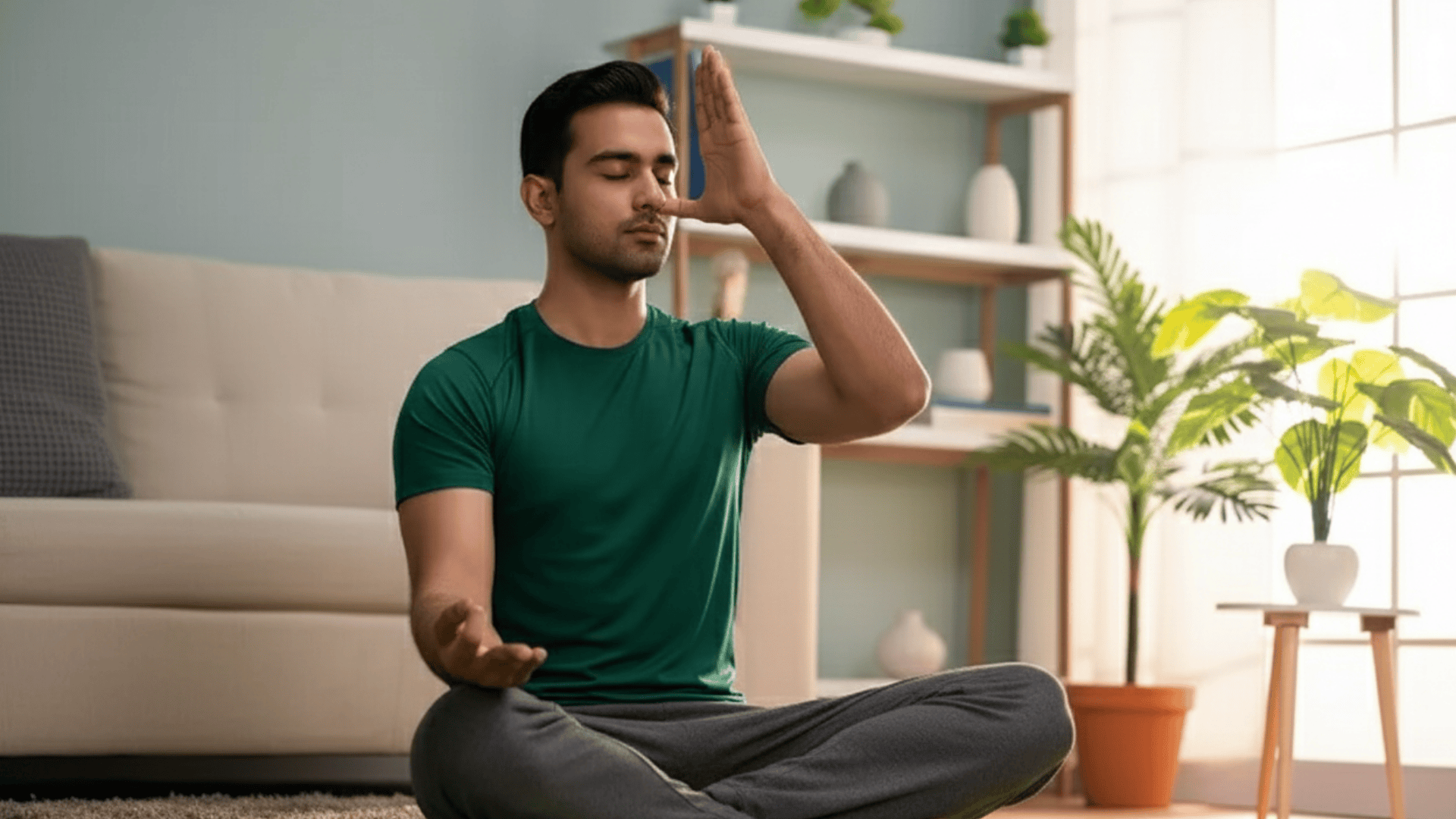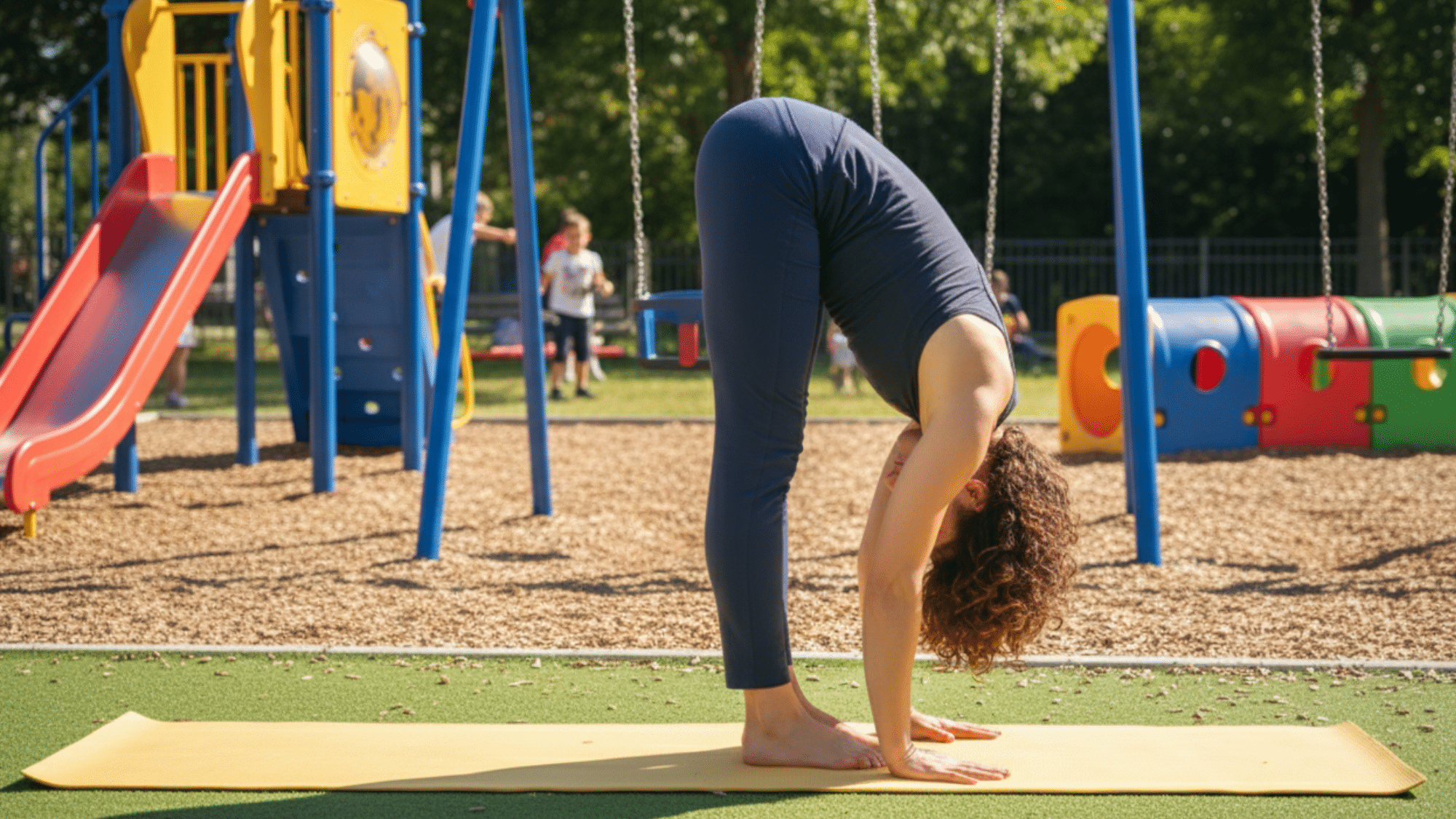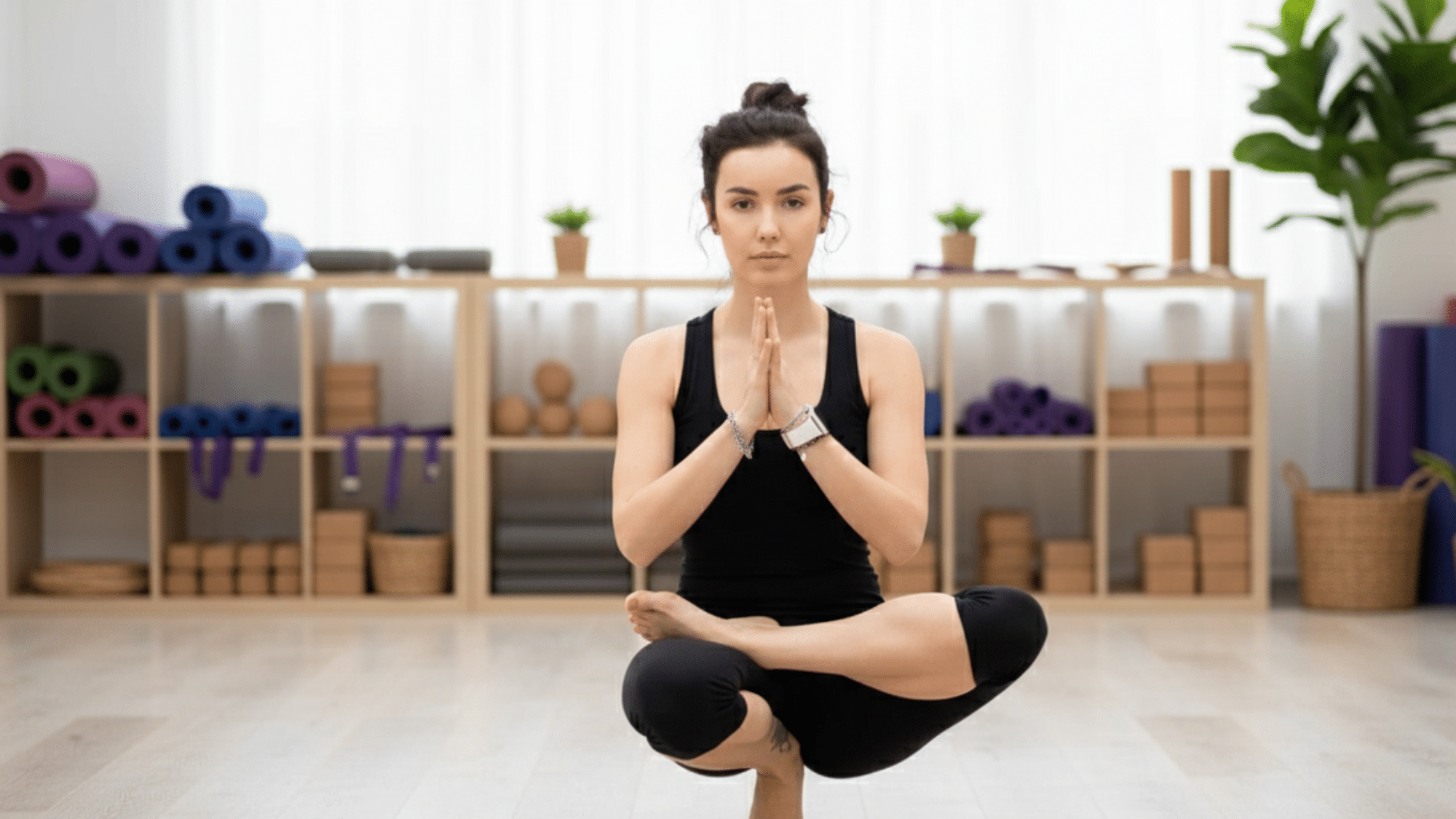You know that moment in yoga class when the teacher says, “move into Utthita Trikonasana,” and you quickly look around to see what everyone else is doing?
Yes, I’ve been there, too! When I first started practicing yoga, the Sanskrit words felt confusing because they are a different language.
But here’s the good news: learning these terms isn’t about showing off. It’s about feeling more connected to your practice. Once you know them, yoga feels less overwhelming and more enjoyable.
These simple yoga terms will help you go from guessing to flowing with confidence. Your future self will be glad you learned them.
Yoga Terms: How to Use This Glossary?
This glossary is designed to grow with your yoga practice. Start with foundational terms if you’re new to yoga, then gradually move into deeper philosophical concepts as you develop.
Each entry gives you the English meaning, Sanskrit roots, and real-world context so you understand not just what terms mean, but how they’re actually used in class and study.
You can jump to any section that matches your current needs, following along in your first class or studying yoga philosophy.
Think of it as your personal yoga dictionary that meets you exactly where you are in your practice, offering the right level of detail when you need it.
Easy & Important Yoga Terms That You Should Know
Here are some of the widely known yoga terms that might be useful for you:
Poses and Body-Related Terms

- Asana(AH-sah-nah): This means any yoga posture or pose.
- Balasana(bah-LAH-sah-nah): That comforting resting pose where you kneel and fold forward. “Bala” means child.
- Tadasana(ta-DAH-sah-nah): Standing tall and steady like a mountain. It serves as the foundation for all standing poses.
- Adho Mukha Svanasana(AH-do MU-kha shva-NAH-sah-nah): The most famous yoga pose! “Adho” means downward, “mukha” means face, and “svana” means dog.
- Sirsasana(shear-SHAH-sah-nah): The “king of poses.” “Sirsa” means head.
- Sukhasana(su-KHAH-sah-nah): Simple cross-legged sitting position. “Sukha” means ease or comfort.
- Uttanasana(oot-tan-AH-sah-nah): Standing forward bend. “Uttana” means intense stretch.
- Bhujangasana(bhu-jan-GAH-sah-nah): That gentle backbend that looks like a cobra raising its head.
- Vrikshasana(vrik-SHAH-sah-nah): The balancing pose where you stand on one leg like a tree.
Breathing and Energy Practices

10. Pranayama (prah-nah-YAH-mah): The practice of controlling your breath to control your life force energy.
11. Ujjayi (oo-JAH-yee): That ocean-sounding breath you hear in yoga classes. It’s done by slightly constricting the throat.
12. Kapalabhati (kah-pah-lah-BAH-tee): Rapid, forceful exhales followed by passive inhales. Great for energizing!
13. Nadi Shodhana (NAH-dee show-DAH-nah): A calming technique where you breathe through one nostril at a time.
14. Bandha (BAHN-dah): Energy locks in the body. Think of them as internal muscle engagements that help control energy flow.
15. Mula Bandha (MU-lah BAHN-dah): The root lock, engaging your pelvic floor muscles.
16. Uddiyana Bandha (ood-dee-YAH-nah BAHN-dah): The upward flying lock, drawing the belly up and in.
Spiritual and Philosophical Concepts

17. Dharma (DAR-mah): Your life’s purpose or righteous path. What you’re meant to do in this lifetime.
18. Karma (KAR-mah): The universal law of cause and effect. What goes around comes around.
19. Moksha (MOHK-shah): The ultimate goal: liberation from the cycle of birth and death.
20. Om (Aum) (AUM): The sacred sound of the universe. Often chanted at the beginning or end of practice.
21. Drishti (DRISH-tee): A focused gaze used during poses to improve concentration and balance.
22. Satsang (SAT-sang): Gathering with like-minded spiritual seekers. Your yoga class is a form of satsang!
23. Guru (GU-roo): A spiritual teacher who leads you from darkness (gu) to light (ru).
24. Mantra (MAN-trah): Sacred sounds, words, or phrases repeated during meditation.
Key Yogic Practices and Sequences

25. Vinyasa (vi-NYAH-sah): That flowing sequence connecting breath with movement.
26. Surya Namaskar (SUR-yah nah-mas-KAR): A sequence of poses that honors the sun. Perfect for warming up!
27. Chaturanga (cha-tu-RAHN-gah): Four-limbed staff pose, that challenging push-up-like position in Sun Salutations.
28. Dharana (dah-rah-NAH): The practice of concentration, focusing the mind on a single object.
29. Dhyana (dee-AH-nah): Meditation, the sustained flow of concentration.
30. Sadhana (sah-DAH-nah): Your personal spiritual practice. This could be your daily yoga routine!
31. Samskaras (sam-SKAH-rahs): Mental impressions or patterns from past experiences that inspire our behavior.
Yoga Lifestyle and Ethics

32. Yama (YAH-mah): The first limb of yoga, dealing with ethical disciplines or restraints.
33. Niyama (nee-YAH-mah): The second limb, focusing on positive observances and practices.
34. Ahimsa (ah-HIM-sah): Non-violence in thought, word, and action. This includes being kind to yourself!
35. Satya (SAT-yah): Truthfulness. Living and speaking your truth.
36. Santosha (san-TOH-shah): Contentment. Finding happiness with what you have right now.
37. Aparigraha (ah-par-ee-GRAH-hah): Non-possessiveness. Not being greedy or attached to material things.
38. Svadhyaya (svah-dee-AH-yah): Self-study, often through reading spiritual texts or self-awareness.
39. Tapas (TA-pas): Disciplined practice or burning enthusiasm for your spiritual path.
Deep Spiritual Symbolism

40. Chakra (CHAH-krah): Energy centers in the body. There are seven main chakras running from the base of your spine to the top of your head.
41. Kundalini (kun-da-LEE-nee): The coiled serpent energy that lies dormant at the base of your spine, waiting to be awakened.
42. Mudra (MU-drah): Hand gestures that channel energy in specific ways. Each finger represents a different element.
43. Samadhi (sa-MAH-dhee): The ultimate state of consciousness, complete absorption, or union with the divine.
44. Prana (PRAH-nah): Life force energy that flows through all living things.
45. Nadis (NAH-dees): Energy channels in the body. It is said that there are 72,000 of them.
46. Ida (EE-dah): The left energy channel, associated with lunar, cooling energy.
47. Pingala (pin-GAH-lah): The right energy channel, associated with solar, heating energy.
48. Sushumna (su-SHUM-nah): The central energy channel running along the spine.
49. Hatha (HAH-tah): A style of yoga focusing on physical postures. “Ha” means sun, “tha” means moon.
50. Iyengar (eye-yen-GAR): A precise style of yoga developed by B.K.S. Iyengar, emphasizing alignment.
51. Ashtanga (ash-TAHN-gah): A vigorous, athletic style of yoga following a set sequence of poses.
Advanced Poses and Positions

- Utthita Trikonasana(oot-HEE-ta tree-ko-NAH-sa-na): Extended triangle pose, a foundational standing pose that strengthens legs and opens the side body.
- Virabhadrasana I, II, III(vee-ra-bha-DRAH-sa-na): Warrior poses I, II, and III, powerful standing poses that build strength and focus.
- Paschimottanasana(pash-chi-mo-than-AH-sa-na): Seated forward bend. “Paschima” means west or back of the body.
- Marjaryasana-Bitilasana(mar-jar-ee-AH-sa-na bee-tee-LAH-sa-na): Cat-cow pose, flowing spinal movements often done together.
- Setu Bandhasana(SEH-tu ban-DAH-sa-na): Bridge pose, a gentle backbend that opens the heart and strengthens the back.
- Halasana(ha-LAH-sa-na): Plow pose, an inversion where legs go over the head.
- Matsyasana(mot-see-AH-sa-na): Fish pose, a heart-opening backbend that counters forward folds.
Advanced Breathing Techniques

- Bhastrika(bhas-TREE-kah): Bellows breath, vigorous breathing technique that generates heat and energy.
- Bhramari(bhra-ma-REE): Humming bee breath creates a calming humming sound while breathing.
- Surya Bhedana(SOOR-ya bhe-da-na): Right nostril breathing, energizing breath practice.
- Chandra Bhedana(CHAN-dra bhe-da-na): Left nostril breathing, cooling and calming breath practice.
- Sheetali(shee-ta-LEE): Cooling breath, tongue curled to create a cooling effect.
- Sheetkari(sheet-ka-REE): Hissing breath, another cooling technique using the teeth and tongue.
Complete Eight Limbs System

- Asteya(ah-STAY-ya): Non-stealing, not taking what isn’t freely given, including time, energy, or credit.
- Brahmacharya(brah-ma-CHAR-ya): Energy management, traditionally celibacy, but modern interpretation includes wise use of energy.
- Saucha(SHAW-cha): Cleanliness, both physical cleanliness and mental purity.
- Ishvara Pranidhana(ISH-wa-ra pra-nee-da-na): Surrender to the divine, letting go of ego and trusting a higher power.
- Pratyahara(prat-ya-HA-ra): Withdrawal of the senses, turning attention inward away from external distractions.
Energy System Expansion

- Apana(ah-PAH-na): Downward-flowing energy responsible for elimination and reproductive functions.
- Samana(sa-MAH-na): Energy governing digestion, metabolism, and transition.
- Udana(oo-DAH-na): Upward-flowing energy governing speech, expression, and spiritual uplifting.
- Vyana(vee-YAH-na): Circulating energy that coordinates all bodily functions and connects all systems.
- Jalandhara Bandha (ja-lan-da-ra BAN-da): Throat lock, engaging the throat by lowering the chin toward the chest.
Modern Yoga and Meditation

- Trataka(tra-TA-ka): Candle gazing meditation, a concentration technique using steady gaze.
- Japa(JA-pa): Repetitive recitation of mantras or divine names for spiritual focus.
- Kirtan(KEER-tan): Devotional singing or chanting, often in a call-and-response format.
- Satsang(SAT-sang): Spiritual community gathering, “sat” means truth, “sang” means association.
- Bikram(BEEK-ram): Hot yoga practiced in heated rooms with a specific 26-pose sequence.
- Yin Yoga(YIN YO-ga): Slow, passive style holding poses for 3-7 minutes to target deep connective tissues.
- Restorative Yoga(re-STOR-a-tiv YO-ga): Gentle, healing practice using props like bolsters and blankets for deep relaxation.
Tips for Learning and Remembering Yoga Terms
Learning Sanskrit yoga terms doesn’t have to feel overwhelming. These simple strategies will help you build your vocabulary naturally:
- Break Down Sanskrit Roots: Understanding word components makes complex terms easier to remember
- Learn Through Class Context: Pay attention to how instructors use terms during practice
- Create Your Personal Reference: Keep notes of new words you encounter in classes or readings
- Use Repetition and Flashcards: Regular review helps move terms into long-term memory
- Practice Pronunciation Aloud: Speaking Sanskrit terms builds confidence and aids retention
With consistent practice, these ancient words will become second nature, enriching both your understanding and your yoga experience.
Wrapping It Up
Congratulations, you’ve just armed yourself with the vocabulary that will change every yoga class from here on out!
I remember the first time I confidently moved into Adho Mukha Svanasana without looking around for cues. It felt like I’d finally found my place in the yoga community.
These terms aren’t just words to memorize; they’re keys that unlock yoga’s deeper wisdom. Start with a few favorites, practice them on your mat, and watch how understanding them changes your entire experience.
You’ll notice yourself breathing deeper, moving with more intention, and feeling genuinely connected to this ancient practice.
Your yoga path is uniquely yours, and now you have the vocabulary to fully accept it. Save this guide, share it with fellow yogis, and remember, every expert was once a beginner. Namaste!





